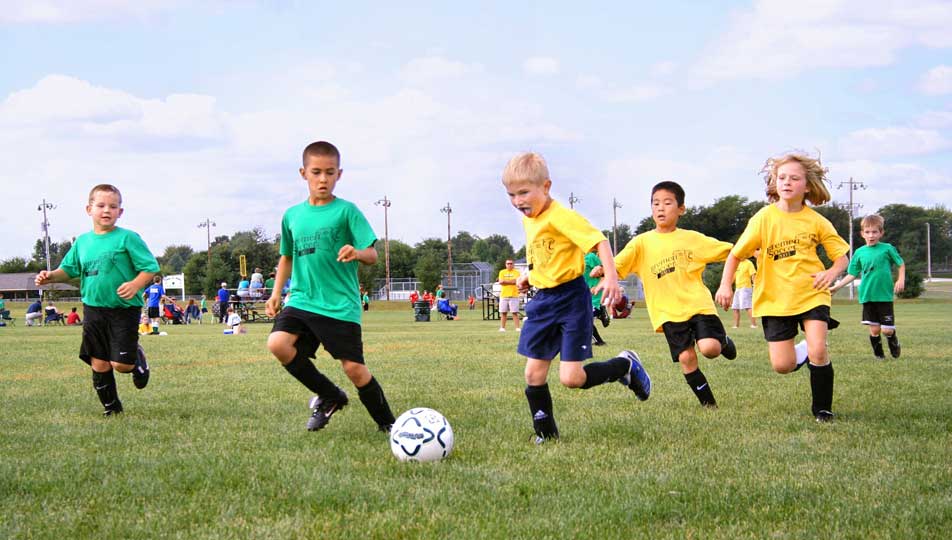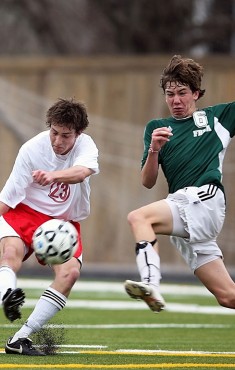In modern sport, fitness and conditioning are hugely important. Professional athletes are stronger, faster, and better conditioned than ever before. Furthermore, developments in sports science and technology mean we have access to more tools to aid our development.
While fitness is important for adults, it is also vital for the long-term development and well-being of young athletes. Even if you don’t want to become a professional soccer player, improving your fitness and conditioning has many benefits. You will feel better and have more energy. You will also improve your quality of life.
We know that trying to create a fitness plan for young soccer players is difficult. You may struggle to know which areas of fitness to concentrate on. You may also be unsure of your children’s limits, and how to tailor a fitness program to their age-range and sport. Never fear, because in the text below we will discuss the importance of fitness and conditioning for young athletes. We will also provide a host of useful tips and training exercises you can use during your soccer practices.
Table of Contents
Why is fitness & conditioning important for young athletes?
First off, let’s briefly look at why these two things are so important for young athletes. As children go through puberty their bodies develop. It is important to take advantage of these changes and maximize their effectiveness.
Training is also a vital component of young soccer players reaching their full potential. You may have a talented young player who is skillful and has brilliant ball control but lacks physical strength and speed. In a situation like this, improving the child’s fitness and conditioning would allow them to utilize their natural soccer talent and reach their full potential.
In addition to this, fitness training offers the following benefits:
- Improved speed
- Improved stamina
- Increased resistance to injury
- Improved core strength
- Healthier lifestyle
Not only can you improve your player’s soccer development, but you can also instill in them the importance of living a healthy lifestyle. The skills a child learns in soccer can be applied throughout their lives and help them develop into well-rounded adults.
How can young soccer players improve their fitness and conditioning?
So, how can you improve the fitness and conditioning of young soccer players? We have experience in this field and understand how to help young athletes improve. First, let’s look at a brief definition of fitness and conditioning. We can then discuss specific training exercises and tips to help improve the fitness and conditioning of young soccer players:
Fitness – Fitness is defined as “the condition of being physically fit and healthy”. It is a broad term that we apply to many scenarios. With regard to soccer, fitness involves endurance, speed, agility, strength, and power. Young soccer players must be physically fit so they can utilize their skills and endure full-length matches.
Conditioning –Conditioning is more specific. It is the process of conditioning a young player’s body for optimum performance in their sport. This will ultimately help their development as a soccer player. It also helps to improve their recovery times and resistance to injury.

10 Tips and routines to improve fitness and conditioning for young soccer players
1. Build stamina through interval training
Stamina is an important physical aspect of soccer. Stamina and endurance determine if a player can remain effective over the course of an entire match. Remember that soccer matches last for 90 minutes – if a young player has poor stamina, they may become tired and perform poorly even before half time.
Interval training is a relatively simple way to improve stamina. This type of training is also known as the stop and go training. The basic premise is to perform continual running drills at two different paces. For example, players would sprint at 100% effort to the halfway line, and then jog slowly using 50% effort to the other end of the pitch. This change in pace improves endurance, but also simulates the type of exertion young players are required to make in matches.
2. Improve sprint speed through resistance training
As well as stamina, soccer players also need speed and acceleration. This allows them to out-pace other players, and quickly reach the ball. A great way to improve speed is through resistance training exercises.
Resistance training is simple and involves the use of resistance bands or other tough materials that provide resistance to muscle movements. Simple exercises involve lunges, pushups, and running on the spot (all with the aid of resistance bands).
3. Build strength through squats and lunges
Although soccer is a non-contact sport, young players must be physically strong. This is especially important when jockeying for position in set-pieces and challenging for the ball in tackles. Weightlifting is a great activity for building strength – though it is not advisable for young children and teenagers. To that end, simple physical exercises like squats, lunges, and push-ups can help develop core strength.
4. Improve general fitness through simple stamina training
To build on point 1, there are a host of other exercises and routines young soccer players can perform to help build stamina including:
- Running up and downstairs
- jumping up and downstairs
- Chest jumps
- Shuttle runs
Many of these exercises can be completed without equipment, which make them fantastic for young players to complete in their own time too.
5. Improve flexibility through extensive warm up and stretching routines for youth athletes
Soccer players must be flexible and agile. They must be able to change direction quickly, accelerate and decelerate, and be supple in their movements. A great way to improve this aspect of conditioning is to ensure rigorous pre-training and pre-game warm ups.
Pre-training warm ups are essential. Firstly, warm ups help to minimize the potential of injury and common problems like cramp. Jumping straight into exercise can be detrimental as your muscles and limbs aren’t ready for action. Secondly, warm ups are great for performing simple exercises that can improve a young player’s flexibility and movement.
Examples of warm up exercises that improve flexibility include:
- High knees
- Butt kicks
- Pull knee to chest
- Pull foot to the rear
- Quick shuffles
6. Allow sufficient recovery time between training sessions
Teenagers and young children have not developed fully – their bodies are still growing. It is therefore important to allow sufficient recovery time between individual activities and training sessions. Although young children recover quickly, we don’t want to expose them to potential injuries or put their bodies under too much pressure.
Ensure training sessions are no longer than two hours. Also, mix training sessions and practices to include both intense and slow-paced activities. Finally, ensure soccer practices are evenly-spaced throughout the week, so that young players can have time to recover.
7. Monitor your progress and set achievable goals
A key to improving fitness and conditioning in young players is to set goals and monitor their progress. At the beginning of the soccer season, create a set of statistics and timings for each player. For example, you could record their 100m sprint time, and record times for different routines and training activities.
This gives both the coach and player a benchmark to work from. As the season progresses, you can monitor progress and set realistic goals for improvement. This provides players with focus and something to strive toward. It also provides coaches with benchmark figures to monitor the development of their team.
8. Try and maintain a balanced, nutritional diet
We cannot stress the importance of diet and nutrition enough! This applies to all children and teenagers – not just soccer players. What you eat and drink can greatly help or hinder your development as an athlete. Furthermore, it can affect your quality of life and future. If you fill your body with the wrong types of food and drink, you can limit your athletic potential. You can also negatively impact your performance due to feeling lethargic or lacking in energy.
Firstly, whether you’re practicing or competing, stay hydrated! Water is essential to staying hydrated during practices and matches. Coaches should encourage their players to drink fluids and keep themselves hydrated – this can improve energy levels and recovery.
A balanced diet is also important – protein, vitamins, and high fiber food can aid development and fitness levels. Try to avoid sugary foods and junk food – we know that McDonald’s looks inviting, but will it help your development as a soccer player?
We hope you have found this article useful. Whether you are an aspiring soccer player hoping to be the next Cristiano Ronaldo, or a coach looking for inspiration, you can take advantage of these tips and training routines. Don’t underestimate the importance of fitness and conditioning! Soccer players from age 12 onwards can improve their ability and performance greatly through consistent, disciplined fitness training.
While fitness and conditioning are important, the development of basic soccer skills is vital too. At a younger age (pre-12 years), though children’s bodies are still fragile, it is advisable to concentrate on building their fundamental skills – dribbling, ball control, and shooting, for example. Fitness and conditioning training should be implemented later in a child’s soccer career.

